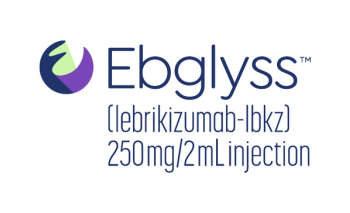
Drug shortages affect selection and treatment costs
Task force aims to track and update drug supply issues
The drug shortage crisis is not over yet. Although the number of new drugs in short supply decreased in 2012 from an all-time high of 267 in 2011, health systems are still experiencing high numbers of shortages, many of them due to unresolved shortages from previous years.
By the end of the fourth quarter of 2011, the University of Utah Drug Information Service had identified 273 active shortages. A year later, active shortages hit an all-time high of 299. In the first quarter of this year, there were 295 active drug shortages.
National problem
Those shortages added up to a national problem for health-system physicians, pharmacists, and their patients, according to Erin Fox, PharmD, a clinical pharmacist and manager of the university’s Drug Information Service, Salt Lake City, Utah. Her organization tracks national drug shortages, researches alternative agents, and shares that
“There is no single reason for drug shortages, but the problem has escalated to the level of a public health crisis as patients and clinicians are impacted daily,” says Fox, who provided comments in April to the FDA Drug Shortages Task Force, which is working to develop a strategic plan to address and prevent drug shortages.
The most common drug classes in short supply last year included antibiotics, central nervous system drugs, electrolytes, and nutrients with trace elements of zinc. These shortages have had an impact on patient care.
In mid-December 2012, three premature infants in a hospital neonatal intensive care unit (NICU) developed severe dermatitis on their hands and feet, around their mouths, and in the diaper area. The infants all had severe cholestasis. They all had been treated with parenteral nutrition, and after infections, drug reactions, and new adhesives were ruled out, the focus turned to the parenteral nutrition.
It was discovered that the hospital pharmacy had reported a shortage of injectable zinc the month before. The result of that shortage, according to a report from the Centers for Disease Control and Prevention (CDC), was zinc deficiency dermatitis in the three newborns. The CDC warned other NICUs of the need to monitor zinc levels in premature infants to avoid this condition.
As of May 28, the vials were still on backorder and in a shortage situation, according to the ASHP website.
Chemotherapy regimens
Chemotherapy drug shortages also were critical in 2010 and 2011. However, by last year, the severity of these shortages had decreased significantly. But the shortage of chemotherapy drugs had significant impact on patient care during that time, through delays in chemotherapy administration, changes in treatment dose or regimen, increased costs, and reimbursement challenges, says James M. Hoffman, PharmD, medication outcomes and safety officer, pharmaceutical services, St. Jude Children’s Research Hospital, Memphis.
In a report about oncology drug shortages that was published in the April issue of the American Journal of Health-System Pharmacy, Hoffman and his colleagues found that of 243 oncology pharmacists who responded to a national survey on drug shortages, 239 reported at least one drug shortage at their institutions in the 12 months previous to the September 2011 survey, and 235 reported that compared to the situation in 2010, drug shortages associated with oncology treatments had increased. Most of the respondents worked for community hospitals and academic medical centers.
Chemotherapy delays or changes in treatment regimens were reported by 227 of these institutions, Hoffman says. Treatment delays resulting from drug shortages were felt acutely by patients with ovarian cancer, colorectal cancer, breast cancer, and acute myeloid leukemia. The oncology medications that were hard to obtain during this period were liposomal doxorubicin, fluorouracil, leucovorin, paclitaxel, cytarabine, doxorubicin, daunorubicin, and bleomycin.
When leucovorin-a rescue drug-was running low at Hoffman’s hospital, oncology pharmacists promoted oral use when it was appropriate. They also had to substitute levoleucovorin, which is similar to leucovorin, except for its price.
“Levoleucovorin is a much more expensive drug-about 60 times-than leucovorin,” says Hoffman. “So drug shortages have had an impact on healthcare costs.”
Besides cost, the potential for medication errors weigh on pharmacy staffs when another drug must be substituted. As do other cancer centers, St. Jude Children’s Research Hospital works to avoid medication errors resulting from incorrect conversions when it is necessary to switch to a substitute drug, but sometimes errors do happen.
“We work hard once we know about a drug shortage. We educate our pharmacists and all clinical staff about the conversions. We update this information twice a week,” says Hoffman. This practice is critical, as drug shortages can occur abruptly.
Daily challenges
The drug shortage crisis has forced health systems to become proactive when dealing with these daily challenges. Management of shortages in drug products has required pharmacists to take on the important role of tracking these shortages. This costs them more time, and most health-systems have not added more resources, according to Hoffman.
“Pharmacists are taking hold of this new role to support patient care,” Hoffman said. “Unfortunately, this is the ‘new normal’ with drug shortages not going away.”
More expansive than the list of critically necessary products made public by FDA is ASHP’s online drug shortage
Legislative efforts
Last July, the Food and Drug Administration Safety and Innovation Act of 2012, legislation designed to help alleviate the drug shortage crisis, was signed into law by President Obama.
ASHP has been a strong advocate of this law, which includes an early notification system requiring drug manufacturers to inform FDA of any production issues at their facilities or of plans to discontinue a drug.
Manufacturers must notify FDA six months before a product is discontinued and as soon as possible in the case of production problems. FDA is responsible for notifying the Drug Enforcement Administration (DEA) within 30 days if the drug in question is a controlled substance.
In addition, the new law requires FDA to create an updated list of critically needed drugs in short supply, to be maintained at the FDA website for easy public
The legislation also allows hospitals to repackage drugs that were in short supply into smaller volume doses for use within their own health systems.
FDA has made progress over the last two years in preventing shortages. According to Valerie Jensen, a pharmacist who is associate director at FDA’s Center for Drug Evaluation and Research (CDER), FDA prevented 195 shortages in 2011 and 282 in 2012. However, she says, more work needs to be done.
In February this year, FDA formed an internal Drug Shortages Task Force and called for stakeholders to provide suggestions for a strategic plan to enhance efforts to address and prevent drug shortages. In April, Fox, at the University of Utah, suggested that FDA work with manufacturers of drugs in short supply to identify incentives that would help manufacturers produce quality products and respond quickly in the event of a drug shortage.
Fox also suggests that FDA consider offering manufacturers incentives to produce unit-of-use dosage forms needed in contemporary pharmacy practice.
This article originally ran in Drug Topics.
Newsletter
Get the latest industry news, event updates, and more from Managed healthcare Executive.




















































